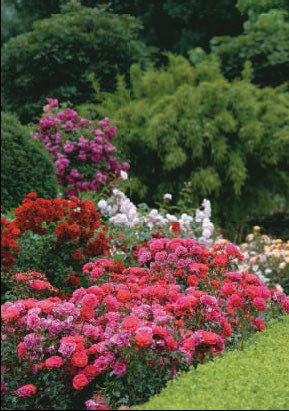To look good, a garden doesn’t have to take up every weekend in mowing and maintenance. Here’s a guide to low-maintenance landscaping that is time-effective but still produces quality results.
Making the most of your time
Most people are so busy with long hours at work, study, chores and looking after kids — plus trying to keep up a social life on top of it all — the outdoor areas of the home are easy to neglect. As a result, modern landscapes for busy people need to be easy to look after and need to be able to cope with some degree of neglect. So planning and designing are vital for a low-maintenance landscape because you don’t want to spend more time down the track redesigning or replacing what didn’t work out the first time.
Landscape maintenance tasks
Effectively creating a low-maintenance garden involves whittling down the amount of unpleasant and time-consuming tasks so that the quicker and more enjoyable tasks remain. With good planning and design, these common landscape maintenance chores can be reduced by doing the following:
Watering:
- Select drought-tolerant plants
- Create cool, moist microclimates using pergolas, shade houses and canopy trees.
- Use self-watering pots filled with premium potting mix containing wetting agent.
- Put irrigation systems on a timer
- Place plants in locations suited to their growing requirements.
- Use a wetting agent on top of the soil at the time of planting.
Fertilising:
- Select native or exotic plants which are suited to the site.
- Employ the permaculture approach and keep chickens to add nutrients to the soil.
- Include self-mulching garden beds, where trees and larger shrubs drop their leaves which compost down and enrich the soil.
- Mulch all garden beds and bare soil to encourage microorganisms which improve soil and plant health.
Weeding:
- The best defence against weeds is to keep garden plants healthy and to start with enough plants to fill out the beds so the plants out-compete the weeds.
- Drastic measures might be needed when redesigning a constantly recurring weedy spot. Change the drainage or shading if possible to suit the requirements of the landscape plants more than the weeds; replace garden soil; or consider a paved area or other feature instead of garden beds. It’s worth getting advice or practical help from a horticulturist when attempting to remove large areas of weeds as they can tell you the best way to remove the weeds for good.
Pruning:
- Choose compact plant varieties and plants with very consistent mature sizes which won’t unexpectedly grow too big for their britches.
- Don’t plant trees under or next to structures or services (especially power lines) if their mature size will cause interference.
- Where you want a raised canopy — for example, near a driveway or over a sitting area — choose plants with a natural habit of being upright with few branches near the ground rather than vase-shaped trees which produce shoots from the base.
Cleaning:
- Place features such as pools and paving away from trees to avoid leaf litter.
- In areas prone to staining, use dark-coloured paving as it is more forgiving.
- Avoid small pebbles where they will collect leaves, dirt, gum nuts, seed pods and weeds.
Spraying:
- Plant selection is key. Choose plants suited to the site and don’t persist with decorative yet fussy plants which continually get attacked by pests and diseases, as you’ll just be feeding and increasing the pests.
- Use a single species of turf grass rather than grass seeds if you want an even finish.
Low-maintenance plants
If you only enlist horticultural advice for one thing, it should be plant selection, because plant selection needs to consist of more than rushing into a garden centre and picking out an array of plants that look good on the shelves.
Use plants which are suited to the local climate (temperature and rainfall) as well as microclimates (aspect, shade, position in the landscape). Have a look around your neighbourhood and see which plants are thriving.
More plants mean less work and less weeds as well as improved microclimate and water retention. Include layers of planting (groundcovers, shrubs, trees) to out-compete weeds. Shade trees reduce evaporation of water from the soil and plants’ leaves.
Some trusty favourites include liriope, clivea and mondo grass for dry shady spots, bromeliads, ctenanthe and crotons in moist shade and, for hot sunny spots, lomandra, native grasses and bird of paradise. Group plants together by the growing conditions they require.
Opt for less lawn
So you’re sick of mowing the lawn all the time but pulling up the lawn and putting in something new seems like a much bigger task — and risky as well. It seems like a Catch-22 situation: are you going to save yourself time by getting rid of lawn area or will you just be creating a bigger problem for yourself?
There are many alternatives to lawn. In areas where you don’t need to walk, groundcover plants suppress weeds and don’t need trimming. Or you can use garden beds to reduce lawn area. Small, awkward areas and along fences are the messiest and most time consuming when it comes to mowing.
Mulch works as a groundcover where areas aren’t used for sitting or children’s play. Synthetic grass can be the most practical solution in some situations; however, it doesn’t contribute anything to the biodiversity of the garden.
A paver edge or path can make the job of lawn mowing a lot easier as they contain the grass and give a straight edge to mow to. But large areas of paving can become messy with leaves and stains. It also heats up the microclimate, creating heat island effects.




